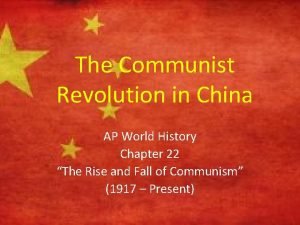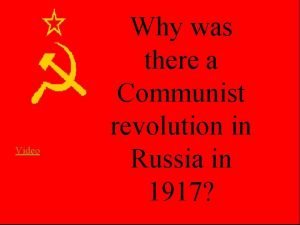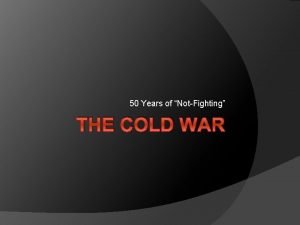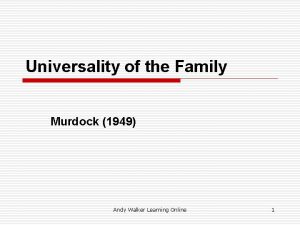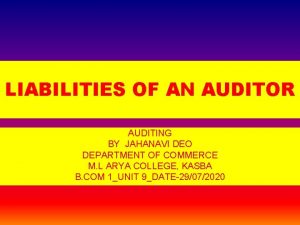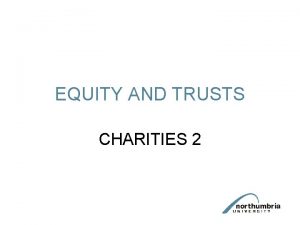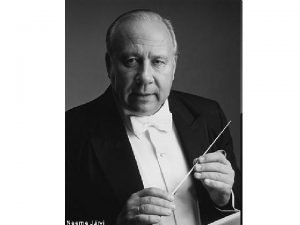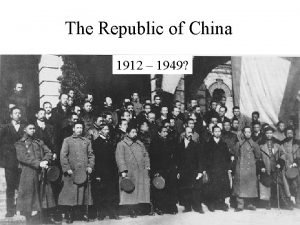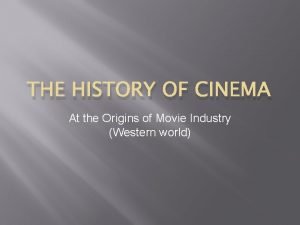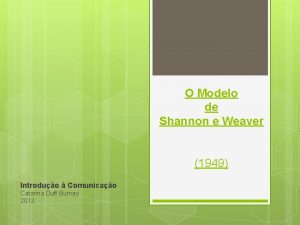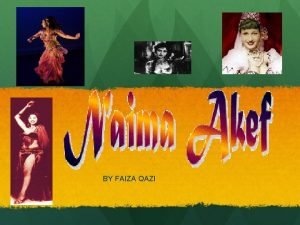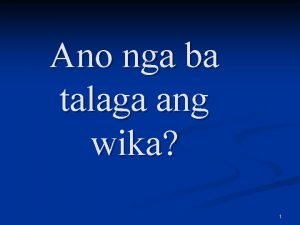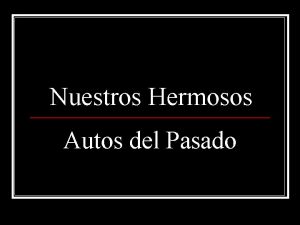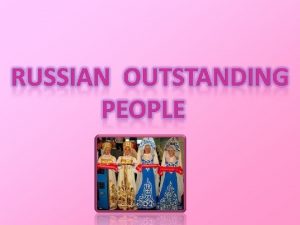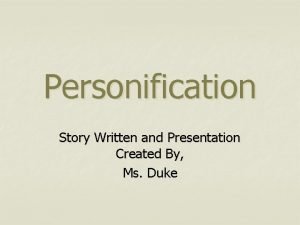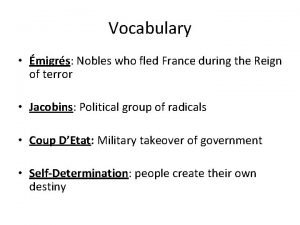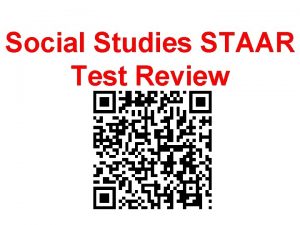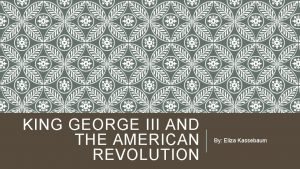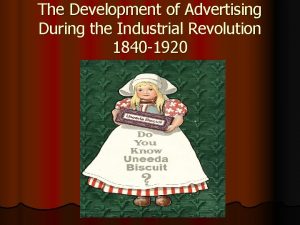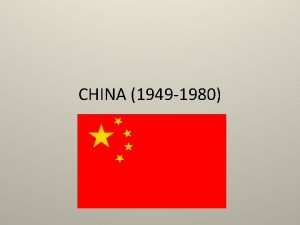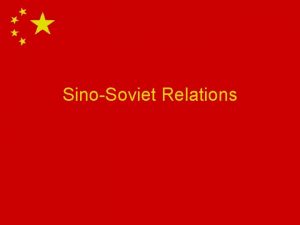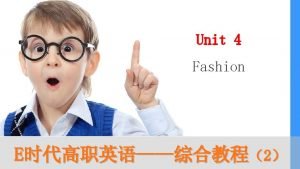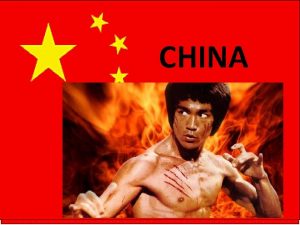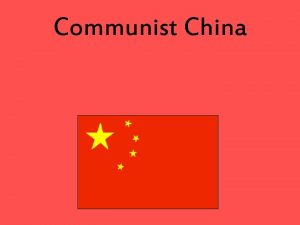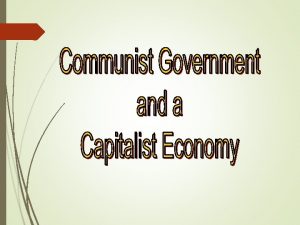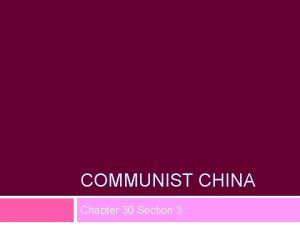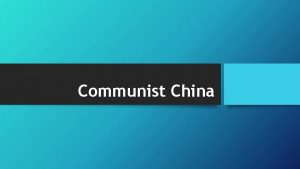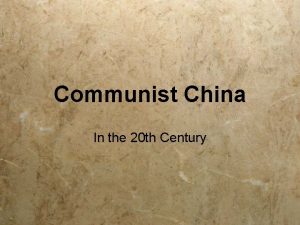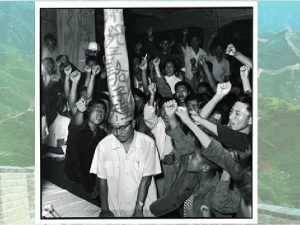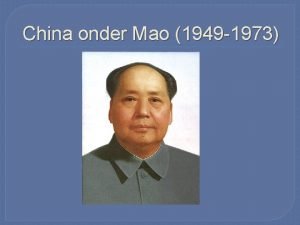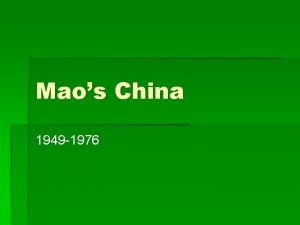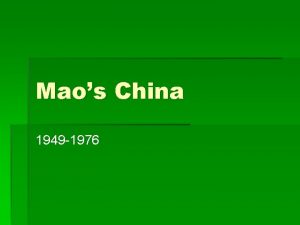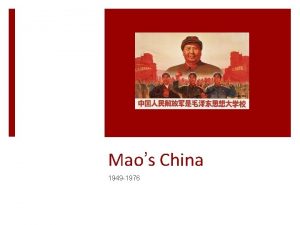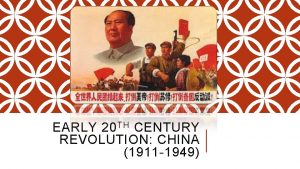Communist China 1949 Present Communist Revolution During the


























- Slides: 26

Communist China 1949 – Present

Communist Revolution • During the 1920’s – 1930’s China fell into a Civil War between two competing sides: 1. The Nationalists – Led by Chiang Kai-Shek with support of the U. S. (WWII ally) 2. The Communists – Led by Mao Zedong with the support of the HUGE peasant class (remember the appeal of communism)

Communist Revolution • Unified during WWII against the Japanese, but the civil war resumed after the Japanese were defeated VS. Chiang Kai-shek Nationalists Mao Zedong Communists

Rally with your Pally • Person with the biggest “guns” goes first: – Describe to your partner who the two groups fighting for control of China are – Who are the leaders of each *be ready to answer!

Communist Revolution • Communists defeated the Nationalists in 1949 and established the Peoples Republic of China (PRC) • Mao Zedong proclaims himself Chairman Mao – leader of the PRC

What happened to the Nationalists? • Chiang Kai-shek and the Nationalists are forced to retreat to the island of Formosa • Set up a new government and called the new country Taiwan

The Great Leap Forward – 1958 -1961 • Mao’s goal was to modernize China – construction of dams, reservoirs, railroads • People gave up their land, so there was no private property and were to do collectivization (live/farm/produce together) • Plan was a failure and 50 million people starved to death

So what would come next?

Cultural Revolution 1966 - 1976 • Continue to modernize by ridding China of the “Four Olds” – Old ideas, old culture, old customs, old habits • Organized the youth into the Red Guard • They were to continue the revolutionary movement • They caused havoc and death as they traveled china, little red books in hand, attacking the “enemies” of the revolution • Destroyed anything associated with old customs – Books, monuments, museums, temples, intellectuals (beat/killed teachers, professors)…etc.

“The Little Red Book” contained quotes by Mao was carried by the Red Guard



• Person with the darkest hair goes first: – Discuss with your partner if something like this could happen here. Think: • If our president told America’s youth that they had permission to destroy anything associated with old customs or ideas, would they participate? • What types of things might get targeted?

Economic Reforms in China • New leadership in the 80 s emphasized the Four Modernizations: 1. Agriculture 2. Science 3. Industry 4. Military • Allowed some free markets (special economic zones –SEZs) to encourage growth • Social and political policies of Mao were continued under communist single-party rule – Suppressed freedoms of speech, press, voting rights, censorship…etc.

• Person with the brightest clothes on goes first: – Review with your partner: • What “olds” were destroyed in the Cultural Revolution • What was “modernized” in the next phase? • In what ways did the people continue to be oppressed as China modernized?

Attempt at Change • The youth and educated who helped make economic reforms successful also demanded political reforms – freedom of press and democracy • In 1989 a massive wave of protests erupted in many major cities across the country, including in the capital city of Beijing • Government sends in military and tanks to stop the protests and preserve the status quo

Tiananmen Square Massacre • Thousands of protesters were killed (although the “official” reports were much lower) • Put an end to the political reforms movement in China • Leads to the current “deal” = No Political freedom in exchange for economic progress – (allows economic prosperity and access to western goods – in the cities – but maintains single party communist rule)


Change and Prosperity…for some • SEZs continued to expand China grows rich through free market capitalism in the cities while under communist rule (huh? ) • Growing middle class larger the entire population of U. S. (350 m plus) • Economy relies on its cheap labor rate to attract manufacturing (check your tags!) • Peasants and laborers remain incredibly poor (Billion+)

Modern Struggles • Economic growth is slowing • Huge population (1. 5 b) causes the “one-child” policy and associated problems like infanticide and huge abandonment of girls at orphanages. (many girls are adopted by other nations). Discuss with your partner the following: • What kinds of long term problems might a one child policy create for China when you consider China’s cultural importance of the “male”

Modern Struggles • Cities are badly polluted due to unregulated manufacturing • Oppression of the people of Tibet who see the Chinese as foreign rulers


Modern Struggles Rural Sichuan roadside sign: "It is forbidden to discriminate against, mistreat or abandon baby girls. "

China Today • Spending more on its military has strained relations with U. S. , Japan, and other regional countries • Communist party continues to oppress and censor the people • China operates like two different countries in one – Open market (capitalism) and prosperity in the cities – Closed market (communism) and poverty in rural areas

Emerging Super Power and the New Arms Race

China Today • Citizens continue to demand more freedoms and clash with single-party rule • 2014 seen huge protests in Hong Kong where the policy is “one country, two systems” and the Chinese government tried to restrict voting there
 1927-1949
1927-1949 The great leap forward ap world history
The great leap forward ap world history Chinese communist party ap world history
Chinese communist party ap world history Communist revolution
Communist revolution Tosconini
Tosconini Murdock 1949
Murdock 1949 An auditor can be held liable under companies act 1949 for
An auditor can be held liable under companies act 1949 for Re hopkinson 1949
Re hopkinson 1949 Arthur miller 1949
Arthur miller 1949 Helilooja 1949-2001
Helilooja 1949-2001 1912-1949
1912-1949 Samson and delilah 1949
Samson and delilah 1949 Shannon weaver 1949
Shannon weaver 1949 Dr faiza asghar death
Dr faiza asghar death Ang wika ay likas
Ang wika ay likas 1954 chevrolet bel air
1954 chevrolet bel air Caricature krokodil 1949
Caricature krokodil 1949 Alla pugacheva was born in 1949 in moscow
Alla pugacheva was born in 1949 in moscow Russian revolution vs french revolution
Russian revolution vs french revolution You should hope that this game will be over soon
You should hope that this game will be over soon Modern commercial agriculture
Modern commercial agriculture Personification story
Personification story The rain kissed my cheeks as it fell
The rain kissed my cheeks as it fell Nobles who fled france during the revolution
Nobles who fled france during the revolution King during american revolution
King during american revolution Who was the king during the american revolution
Who was the king during the american revolution Industrial revolution advertising
Industrial revolution advertising

